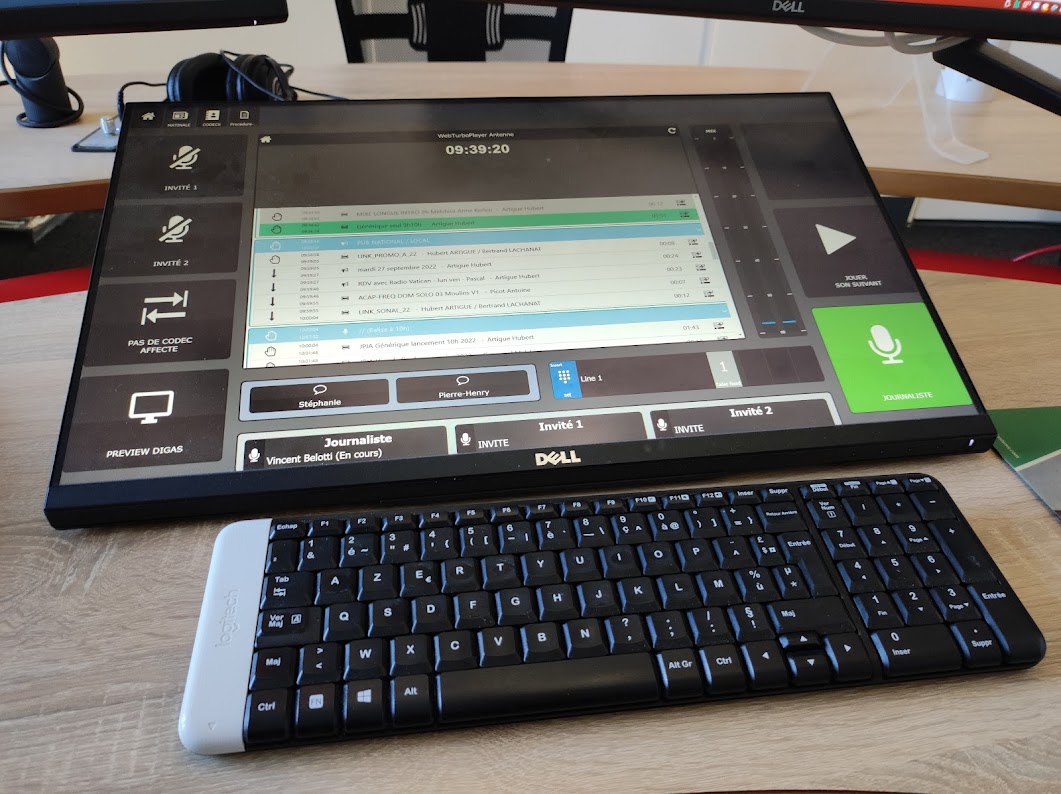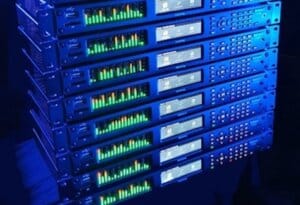
LYON, France — RCF, Radio Chrétienne Francophone, is a French-language radio network created in 1982 by the then Archbishop of Lyon, Monsignor Albert Decourtray and Father Emmanuel Payen. The network has 64 local stations, each with several FM frequencies for a total of 270 frequencies, providing an extensive coverage of French territory. RCF also started broadcasting its programs in Belgium in 1996 on FM and, since 2019, on DAB+ on the new Belgian station 1RCF. RCF also relays its programs throughout Europe by satellite.
Two-thirds of RCF’s revenue network comes from listeners’ donations, and the rest from local partnerships and Le Fonds de soutien à l’expression radiophonique (the Support Fund for Radiophonic Expression). The RCF national headquarters in Lyon relies on 300 employees and 3,000 volunteers, including 180 in Belgium. In France, the network provides just over four hours of local programs each day. In Belgium, it broadcasts 17 hours of programs specific to each local radio station every day, as required by the Conseil supérieur de l’audiovisuel, the local media regulatory authority. According to local Médiamétrie studies, RCF reaches 3 million listeners; half of are non-practicing Christians, belong to other religions or have no religion.
The meshing project

In 2014, RCF started using new production tools and replacing the IT infrastructure with the objective of pooling the tools throughout the network by 2023. Julien Colnot, head of production tools for RCF, says that the request initially came from local network stations wanting to replace their old analog consoles. “Then the project evolved to include IT infrastructure, business software and audio codecs. Finally, we have made the interconnection of our studios more reliable and secure through an MPLS VPN,” says Colnot.
“In two years, we developed our basic core, now configured with two servers per station and three playout systems — most of our stations have two studios. We opted for DigAS production and automation software from David Systems and audio over IP solutions from Axia for grid control and remote audio support, which our stations were demanding more and more.”
According to Colnot, one of the project’s main objectives was to facilitate collaborative work between radio stations. “Our regional radio stations share more and more programs. For example, every evening, a pilot station in each region airs the 6–7 p.m. show. The local RCF pilot radio program is then delivered with Sound4 cards and IP Connect to the five other RCF stations in the region, thus sparing the pilot radio from sending it multiple times. With this pooling system, we optimize the use of our VPN links.”
Automatic programming interface
RCF has set up user interfaces to facilitate program distribution and audio matrix switcher monitoring. “The goal is to simplify our infrastructure as much as possible — the Axia elements, 120 Digigram codecs, 60 Sound4 cards, servers and thousands of PCs,” explains Colnot. “With the IQOYA Talk codec, we no longer need a mixing element for outdoor reporting. It’s easy for non-technical presenters to use, and we can easily manage the whole codec infrastructure remotely.”

Yohann Burgan, director of RCF Information Systems, manages the project and a team of 10 people. “We have installed touch screens in secondary and self-production studios and have an increasing number of virtual studios. We have to familiarize presenters with the new virtual environment and develop their independence. In most of our stations, there is now only one technician, compared to two, say, 10 years ago. The radio business is shifting more and more towards content production — providing live broadcasts, outdoor reporting and writing content for station websites,” says Burgan.
According to Colnot, RCF’s objective is to move toward self-production by non-technical presenters and producers. “We adapt the tools in these virtual studios to simplify them as much as possible, such as by removing unnecessary faders and managing levels through sound processing. The touchscreen interface, built with IP-Studio’s IP-Tablet, is similar to smartphone apps we use daily and can adapt to the users’ needs,” says Colnot.
2023: Virtualization
By 2023, most RCF studios will be completely virtual. For the joint program studios in Lyon, the overhaul of the caller switchboard is also on the agenda. The network brought about the project to meet the needs of on-air staff, but presenters currently cannot see callers and require an interface that shows more information about them, such as their favorite programs.
“We want to standardize our switchboard, investigate new things to exploit across the entire network, and build links with our CRM to ensure a 360-degree view of our audience and offer innovative content services,” says Colnot.
Burgan admits that offering an on-air tool staff can use from anywhere has its challenges. “We must rethink producing and programming to adapt to the new ways of teleworking. This is a real challenge for the 300 employees and 3000 volunteers. In addition to migrating to DigAS web tools for production and programming, we use Tieline Report-IT and Digigram Iqoya Guest technologies, supplemented by webcams in all studios,” says Burgan. “At RCF, being local is our focus, which demands more from our studios. We now have 64 meshed local radio stations using pioneering technology perfectly suited to the quality of the network’s programs and simplifying the task of its users.”





















